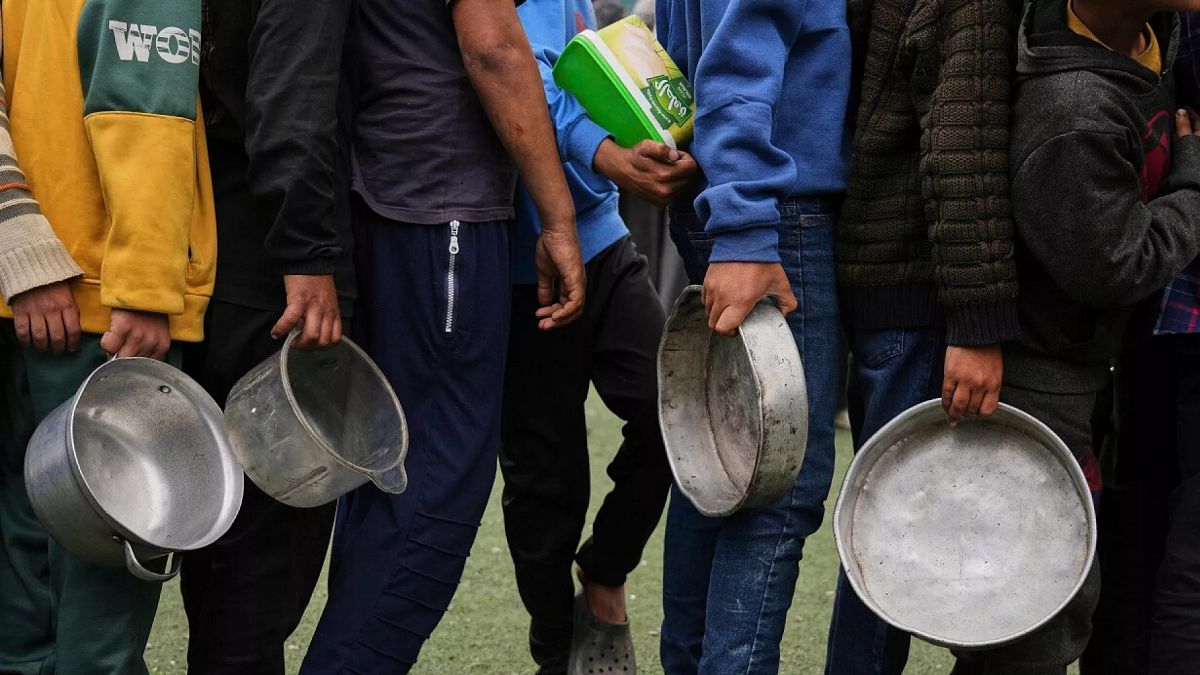The 134 points adopted by the group’s leaders in the document have potentially profound implications
By Andrey Kortunov, Ph.D. in History, Director General of the Russian International Affairs Council, RIAC member
This week’s Kazan Declaration suggests that the BRICS – in its expanded composition– is ready to open a new chapter in its history. Never before have such voluminous documents been adopted as a result of the group’s summits. Moreover, the Kazan Declaration will be the subject of great interest in the world’s political and academic circles, as well as the object of criticism by opponents of BRICS.
For the first time, the group’s unified vision of the current state of the international system is set out in detail.
The Declaration is a voluminous document containing 134 paragraphs, some of which are quite long. The statement adopted at the previous summit in Johannesburg in August 2023, contained only 94 paragraphs, and a document, adopted in Beijing in July 2022 had 75. Thus, year by year the outcome has become increasingly detailed and, as it is now customary to say, substantive, reflecting the gradual increase in the intensity of the group’s engagement and the broadening of the substantive scope of its multilateral cooperation.
The Kazan Declaration consists of a preamble and four sections dealing with: (1) strengthening multilateralism, (2) global and regional security, (3) financial and economic cooperation, and (4) humanitarian exchanges. This division seems reasonable and in line with the priorities of the Russian chairmanship announced a year ago.
For the first time in BRICS’ history, the Declaration sets out in detail the group’s shared vision of the current state of the international system, the common or overlapping approaches to the fundamental global problems of our time and to acute regional crises, and the contours of a desirable and achievable world order as the members of the group currently see it. While the document does not provide specific timetables for individual tasks or roadmaps for specific areas of work, it does cover a number of key objectives that the group should or could pursue over the next few years. It is clear that the document is the product not only of the Summit itself, but also of a great deal of hard work by an army of experts, officials and diplomats at various levels in multilateral formats over the past few months.
The multilateral negotiation of the final text of a document of such length and importance is in itself a non-trivial task, especially as the text had to be negotiated not in the old format of the five BRICS members, but with the involvement of new members who had no previous experience of such work. One can only guess at the amount of work that went into the 43 pages of the final document.
Reading through the text of the declaration, it is easy to see that there is a clear balance between the security and development agendas. This balance suggests that the group has deliberately chosen to maintain its very broad mandate and will not focus its future activities on one thing – for example, promoting trade among the group’s members, as some experts have suggested.
Rather than adopting a narrow, thematic approach, BRICS intends to position itself as a multitasking laboratory of global governance, where new algorithms of multilateral cooperation and innovative models for solving the world’s major economic and political problems can be tested, including trade, finance and strategic stability. The group’s political ‘investment portfolio’ is thus more than diversified, and this diversification increases the chances of success for at least some of its many initiatives. This ‘issue-based’ approach to cooperation should help to overcome departmental divisions and to avoid the excessive bureaucracy inherent in many international organizations.
On development issues, the BRICS predictably faces a difficult choice between trying to achieve reforms of the existing, largely Western-oriented international economic and monetary institutions and trying to create effective alternatives to these institutions under their own common umbrella.
Judging from the text of the declaration, the intention is to maximize both opportunities: it calls for fundamental institutional changes in ‘old’ multilateral structures such as the IMF or the IBRD, while at the same time stating the BRICS’ intention to further promote non-Western institutional alternatives to these predominantly Western structures, such as the New Development Bank (NDB) and the BRICS Contingent Reserve Arrangement (CRA). On the one hand, the document strongly supports the World Trade Organization (WTO) as a universal mechanism for the development of international economic relations, but does not limit its support to the WTO alone, and also calls for further trade liberalization within the BRICS grouping itself.
The Declaration does not explicitly criticize the trade or financial practices of any particular country or group of countries, but expresses concern about “unlawful unilateral coercive measures,” such as sanctions, which are seen as damaging to the global economy and worldwide sustainable development goals. The paper concludes that such measures inevitably undermine the UN Charter and multilateral trading systems. This emphasis is not surprising - most of the BRICS member countries are either already subject to some form of unilateral sanctions by the West, or could be at any moment. Therefore, the idea of reducing dependence on the ‘old’ international institutions runs through the entire text of the document.
Security issues remain very sensitive for most of the BRICS member countries, and the declaration devotes most of its attention to them. It is not hard to guess that, at least in some conflict situations, members of the group could easily find themselves on different sides of the barricades. Judging by the carefully calibrated text of the Declaration, those who worked to bring together the many versions of the document spent a great deal of time and effort finding appropriate language to describe many of the current crises and conflicts. The paragraph on Ukraine, for example, is very short and refers to the positions already expressed by the Group in the votes on Ukraine in the Security Council and General Assembly of the UN. It also argues that a peaceful solution should be consistent with UN principles and norms in their entirety, pays tribute to mediation efforts and calls for conflict resolution through dialogue and diplomacy.
We can assume that it was not easy to find a common denominator on the situation in Gaza, given the very different positions of, for example, Iran and the UAE on Israel. The statement on the need to respect the territorial integrity of Syria could be interpreted as an implicit criticism of the Turkish military presence in that country, which Damascus has not explicitly authorized. It was probably easier to agree on less contentious issues, such as the ongoing nation-building crisis in Haiti, which is why the paragraph on this was relatively long and detailed. The same applies to the issue of international terrorism, which appears to be quite detailed; approaches to international terrorism seem to have been shared, if not fully agreed, among the group members from the outset.
The group decided that some of the more sensitive or technically challenging issues should be further considered and explored in more detail. Such issues include, for example, the Russian proposal for BRICS Clear, a system for trading securities without the associated conversion into dollars. One can imagine that many of the proposed changes to the global financial system using blockchain technology and digital tokens backed by national currencies, which are designed to make dollar transactions far less necessary in global trade, will not be easy to promote and therefore need further study at expert level.
The same goes for proposals to modernize transport and logistics infrastructure within the BRICS grouping – given the expansion, this task looks different today than it did a year ago. On the other hand, something like a BRICS-based grain exchange may be easier to implement because the BRICS group already includes some of the world’s largest grain exporters and importers. It would be natural for the BRICS to become more actively involved in managing global energy markets – and here the group includes most of the world’s leading producers and consumers of hydrocarbons.
Overall, the declaration suggests that the enlarged BRICS group is ready to open a new chapter in its history. It is clear that BRICS is not an anti-Western alliance, and the group is not seeking to deliberately undermine or destroy Western institutions. The authors of the Declaration chose their wording very carefully, avoiding any turns of phrase that might lead the reader to believe that a sharp confrontation between the collective West and the rest of the world is inevitable.
BRICS does not even aim to ‘balance’ the West in any way. The BRICS will never be able to become a kind of G7, given the diversity of its members and the absence of a clear hegemonic leader in the group. Nevertheless, the group is capable of claiming, and is already openly doing so, a new, more prominent role in global governance and in defining the parameters of the new world order. Moreover, it intends to become one of the most influential actors in the entire global South, which has been severely underrepresented in most multilateral international institutions.
There is reason to believe that the Kazan Declaration will receive a great deal of attention in both political and academic circles around the world, and that it will receive its fair share of criticism from skeptics and opponents of BRICS. Some will say that the declaration was too general, too ambiguous and not focused enough on specific issues. Some will be tempted to dismiss the document as just another wish-list. However, the Kazan Declaration shows not only that the enlarged BRICS can agree on a very wide range of issues, but also that the group is breaking new ground in its development. The 17th BRICS Summit will be held in Brazil next year, and the long journey from Kazan to the Latin American continent promises to be a truly exciting one.
This article was first published by the online newspaper Business-Online and was translated and edited by the RT team

 5 months ago
43
5 months ago
43









 We deliver critical software at unparalleled value and speed to help your business thrive
We deliver critical software at unparalleled value and speed to help your business thrive






 English (US) ·
English (US) ·